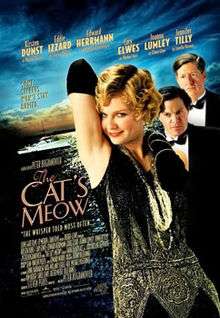HMS Evadne
| History | |
|---|---|
| Name: | HMS Evadne |
| Builder: | Camper and Nicholsons Shipyard |
| Launched: | September, 1931 |
| Christened: | Evadne |
| Completed: | 1931 |
| Commissioned: | September, 1939 |
| Fate: | Returned to civil use as a yacht |
| General characteristics | |
HMS Evadne was a converted yacht, commissioned as a warship by the Royal Navy during the Second World War. She survives today as the yacht Marala.
History
With a shortage of warships at the start of the war, and the Battle of the Atlantic, the Royal Navy found itself in particular need of excort vessels to protect merchant shipping from commerce-raiding German U-Boats and surface raiders. Production of new veseels was increased in Britain and abroad, obsolete United States Navy destroyers would be obtained under the Destroyers for Bases Agreement, and all manner of civil vessels would be adapted as naval vessels. This included fishing trawlers utilised as minesweepers, passenger liners such as HMS Jervis Bay and HMS Queen of Bermuda, both converted to Auxiliary cruisers, and sundry other vessels.
The Evadne was a large motor yacht belonging to Charles Fairey, of Fairey Aviation, which built the Fleet Air Arm's Swordfish torpedo bomber, among other designs. Transferred to the Admiralty for the duration of hostilities, she was refitted in England as an anti-submarine vessel, then despatched to the Royal Naval Dockyard in Bermuda, where Charles Fairey owned a house and was a sometime resident.[1]

The dockyard was the core of a naval base in Bermuda that included the North America and West Indies Squadron, an Admiralty House, and a Royal Naval Air Station. It had been placed in Bermuda following American War of Independence as its location (about 1,030 kilometres (640 mi) off of Cape Hatteras, North Carolina, 1,239 kilometres (770 mi) south of Cape Sable Island, Nova Scotia, and 1,770 kilometres (1,100 mi) northeast of Miami, Florida) made it a useful replacement for the continental bases lost with American independence. During both world wars, in addition to its other roles, Bermuda served as a forming-up point for trans-Atlantic convoys. Ships arrived singly, and collected into convoys within the safety of Bermuda's surrounding barrier reef.
During the Second World War, the convoys from Bermuda, coded (coded BHX) joined at sea with convoys originating at Halifax, Nova Scotia (coded HX), before crossing the Atlantic, it having been shown mathematically that - the area of a circle increasing disproportionately to its circumference as its radius is increased - it required relatively fewer warships to protect one large convoy than two smaller ones.
Although the convoys were provided with a Royal Naval escort (early in the war, with shortages of escort vessels, this could be a single ship, as with Convoy HX 84 (which included ships from Bermuda) was attacked by the Admiral Scheer in November, 1940.
Vessels arriving alone at Bermuda generally had no protection until they neared the archipelago where HMS Evadne patrolled the surrounding Atlantic, and also met and escorted arriving vessels to the channel through the reefs, where they were met by the converted tugboat, HMS Castle Harbour, crewed by local-service ratings, which brought the pilot (who steered the visiting ship through the reefs) and the naval examination officer tasked with inspecting arriving vessels. The Castle Harbour also carried out anti-submarine patrols within the reef (although the likelihood of anyone unfamiliar with the local waters navigating through the reef in a vessel of any size was unlikely, the events at Scapa Flow, on 14 October 1939, illustrated the dangers of complacency).
Current role
Following the war, Evadne returned to civil life as a yacht. She operates today in the Mediterranean, under the name MY Marala.
In Print
Commander Alex Cherry of the Royal Navy Volunteer Reserve, an American volunteer, had joined the Evadne as part of her original naval crew, and served aboard her in Bermuda before being transferred to other vessels. He recorded his time aboard her in his book, Yankee R.N..[2]
On film
The Evadne (now Marala) was the setting of the 2001 film The Cat's Meow, in which she represented William Randolph Hearst's yacht, the Oneida.
References
- ↑ HERITAGE MATTERS: Hospitable ladies at the Bermudiana, by Dr. Edward Harris. The Royal Gazette. Published 27 August 2011
- ↑ Yankee R.N., by Commander Alex H. Cherry, OBE, RNVR. Jarrold's Publishers (London) Ltd, Portland Street, London W1